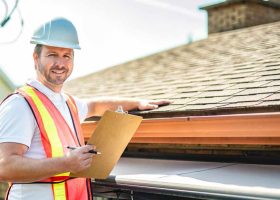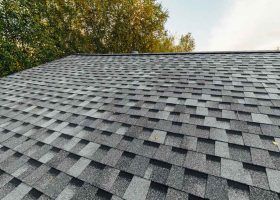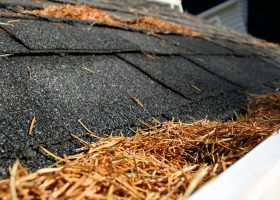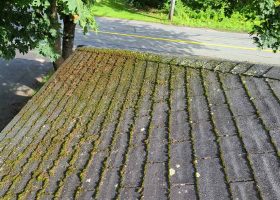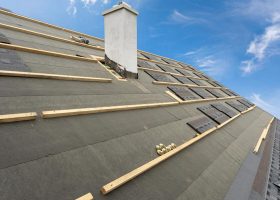Maintaining the integrity and functionality of your roof is vital to the overall health of your home, especially in the variable climate of Raleigh, NC. Yet, many homeowners unwittingly fall into common pitfalls that can compromise the longevity of their roofs. By highlighting these frequently made mistakes and providing actionable advice, Triangle Home Exteriors aims to assist residents in avoiding unnecessary damage and costs.

Ignoring Regular Inspections
One pervasive mistake is neglecting regular roof inspections. In the bustling rhythm of life, especially in a lively area like Raleigh, it’s easy to overlook the necessity of examining your roof for deterioration or damage. Seasonal inspections, ideally during fall and spring, can preempt major issues by catching minor problems early.
Overlooking Moss and Algae Growth
In North Carolina’s humid climate, roofs are particularly susceptible to moss and algae growth, which are not merely cosmetic issues. These growths can lead to moisture damage and, eventually, structural issues. Homeowners often underestimate the importance of removing vegetation and using preventive treatments.
Improper Installation of Materials
DIY projects or hiring non-specialists for roof repairs or installations can lead to improper material installation. Whether it’s due to incorrect shingle placement or inadequate sealing, these mistakes compromise roof integrity. It’s always advisable to rely on professionals with local expertise in Raleigh’s building codes and weather conditions, like those at Triangle Home Exteriors.
Neglecting Gutters and Downspouts
Gutter and downspout maintenance are often overlooked components of roof care. Clogged or damaged gutters can cause water to back up and damage your roof, siding, and foundation. Regular cleaning and inspection are crucial, particularly after Raleigh’s often heavy rainfalls.
Skipping on Professional Maintenance
Perhaps the most critical error is the inclination to bypass professional maintenance. While it’s understandable to attempt to save on expenses, the nuanced expertise of a professional can prevent extensive, costly damage down the line. Roof maintenance professionals are well-versed in dealing with the specific challenges posed by the region’s weather and environmental conditions.
Attempting Temporary Fixes
Relying on temporary fixes rather than addressing underlying issues can lead to compounded problems. Quick fixes can mask the severity of damage, leading to a greater extent of degradation over time. It’s imperative to consult with roofing experts who can assess and recommend long-term solutions.
Triangle Home Exteriors underscores the importance of avoiding these common roof maintenance mistakes. With the region’s specific needs in mind, our team of experts is committed to providing top-tier services to ensure the longevity and durability of your roof. Protecting your home starts from the top down, and understanding these maintenance missteps is the first step toward safeguarding your valuable investment.
In conclusion, proper roof maintenance is a critical aspect of homeownership that can easily be overlooked. By steering clear of the mistakes discussed, you can ensure your roof remains in optimal condition, protecting your home and family. If you’re unsure about the condition of your roof or recognize the need for professional inspection, don’t hesitate to reach out to us. Contact us today at (919) 615-1101 or fill out our online form to schedule a consultation. Our knowledgeable team is ready to address all your roofing concerns and needs, providing quality and peace of mind to homeowners.



